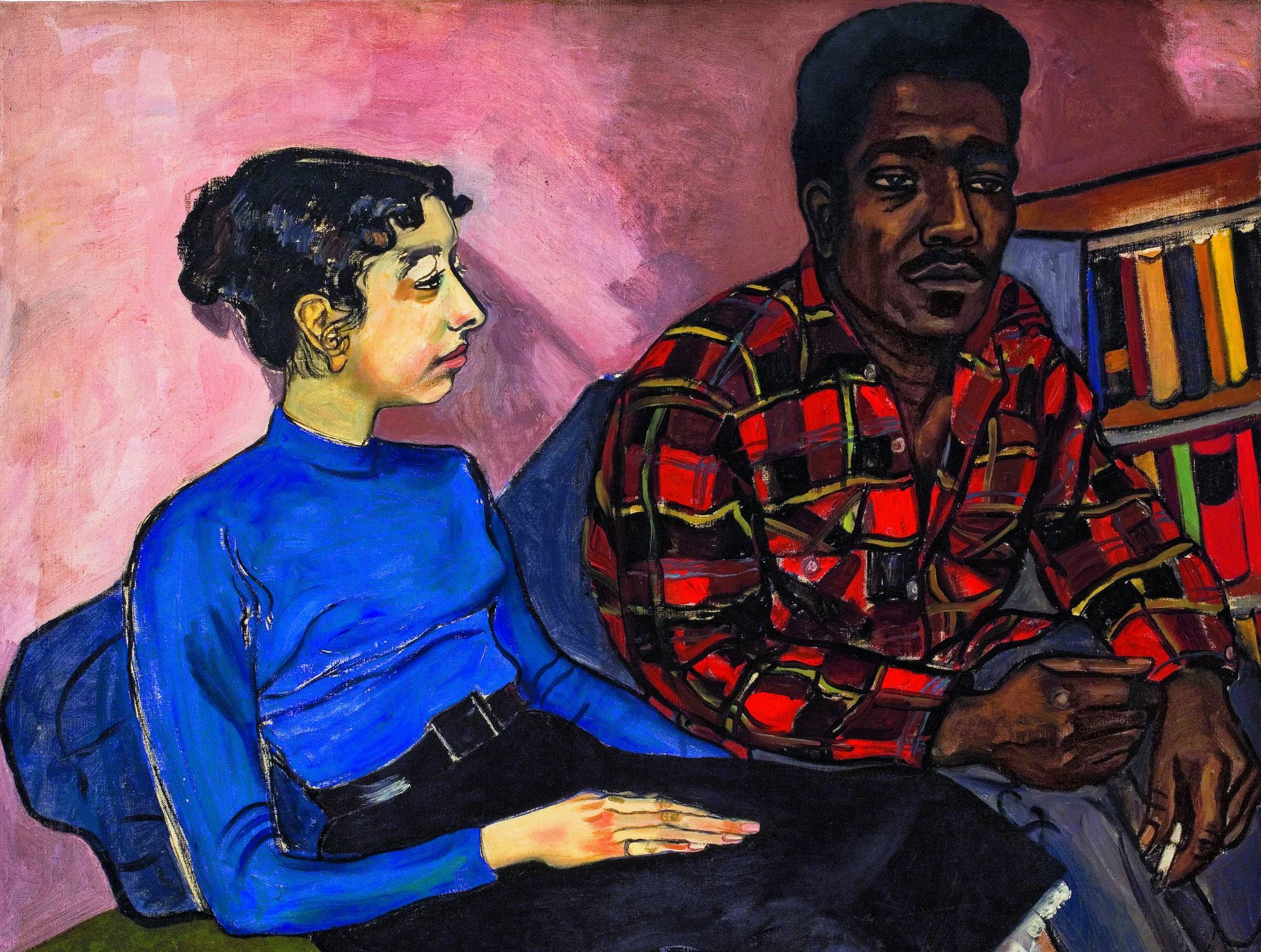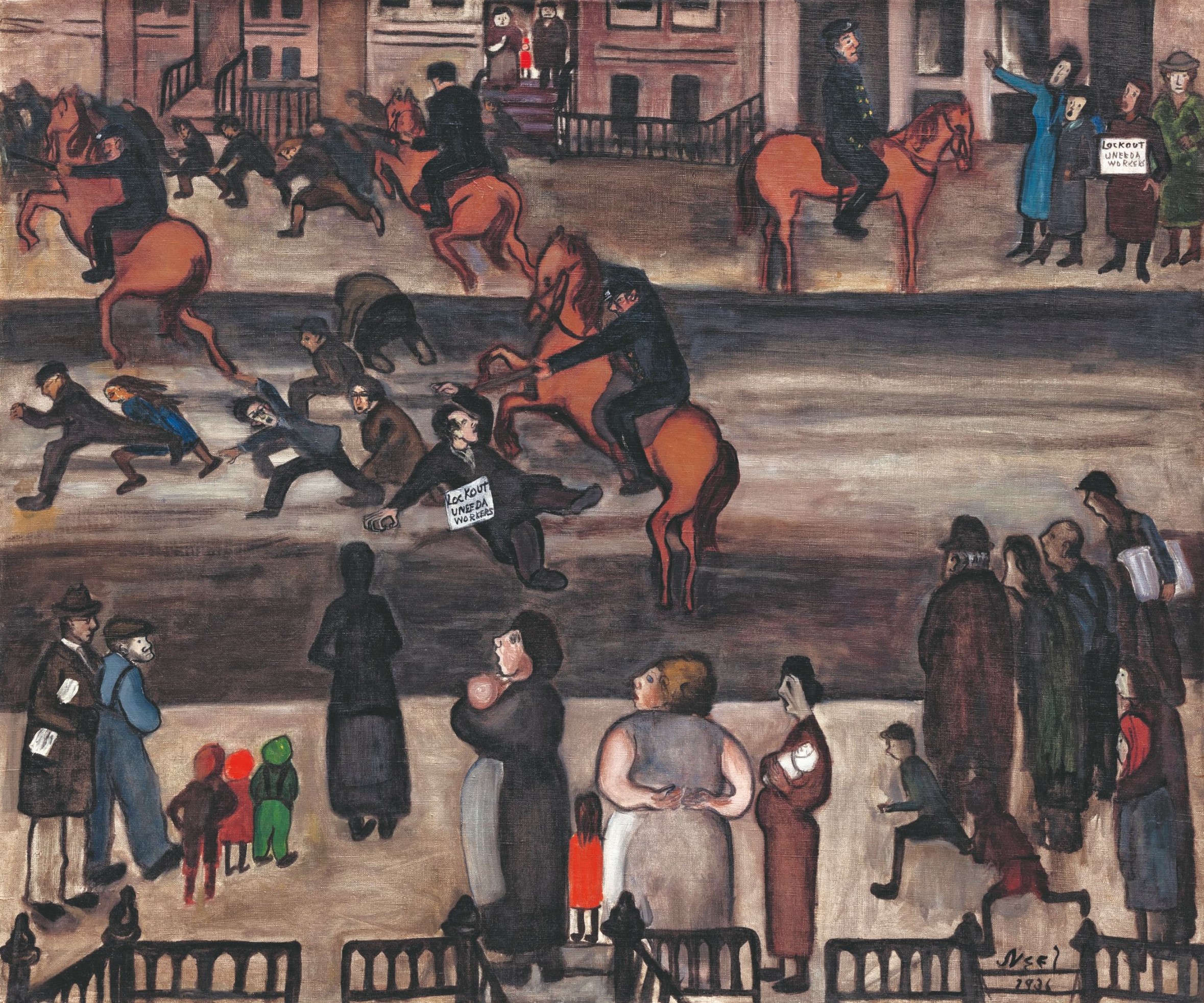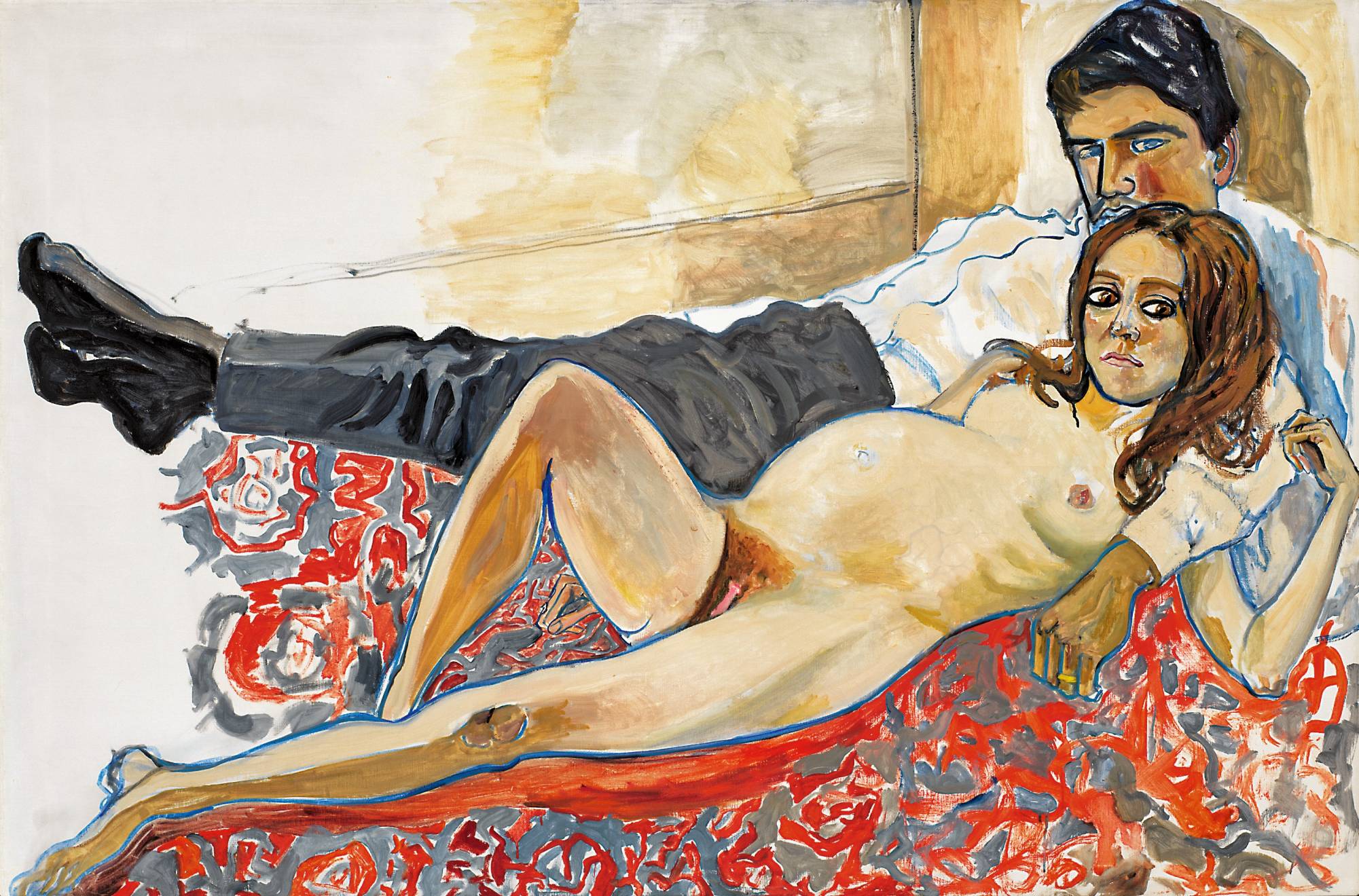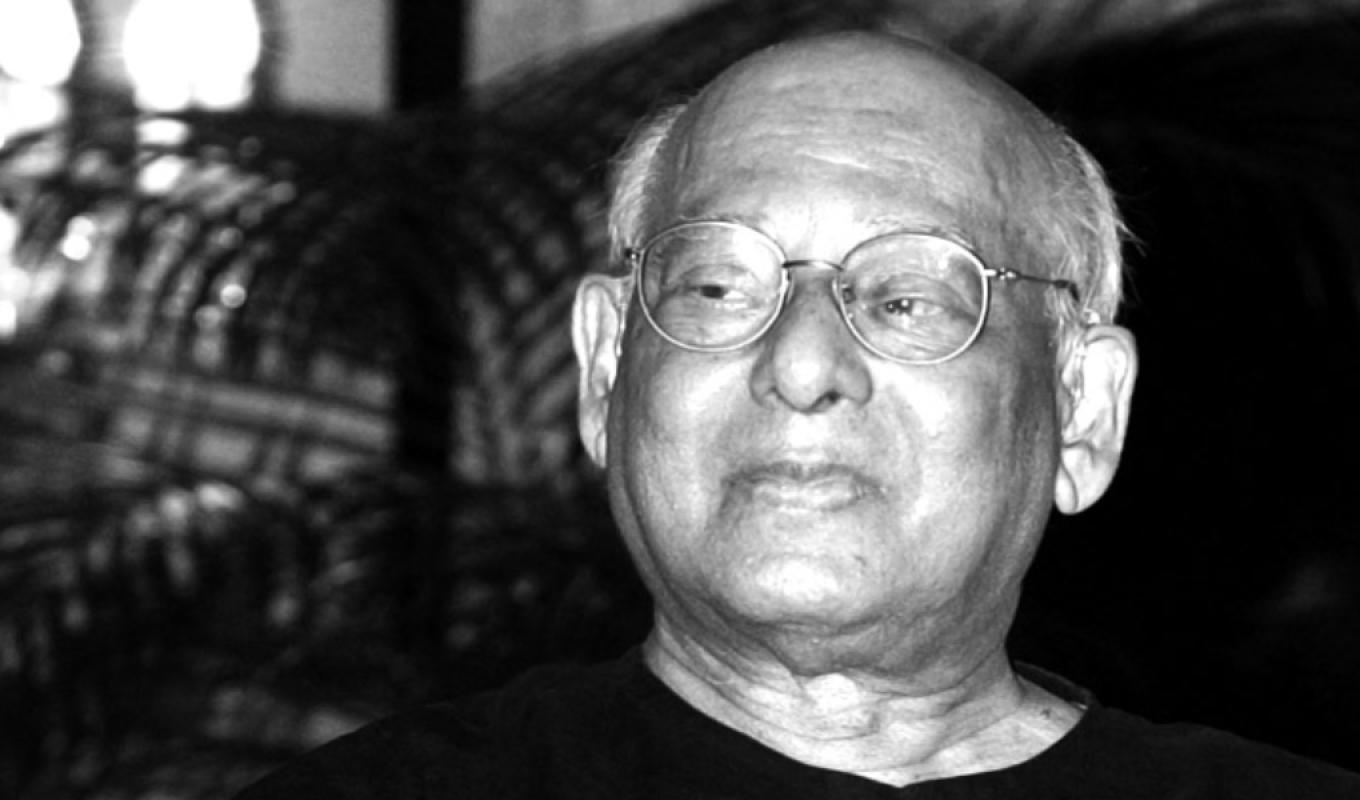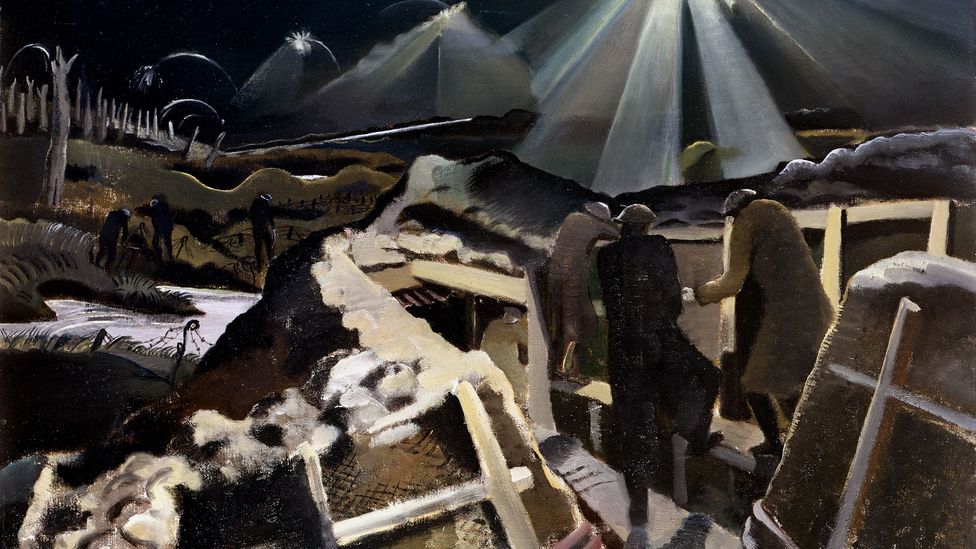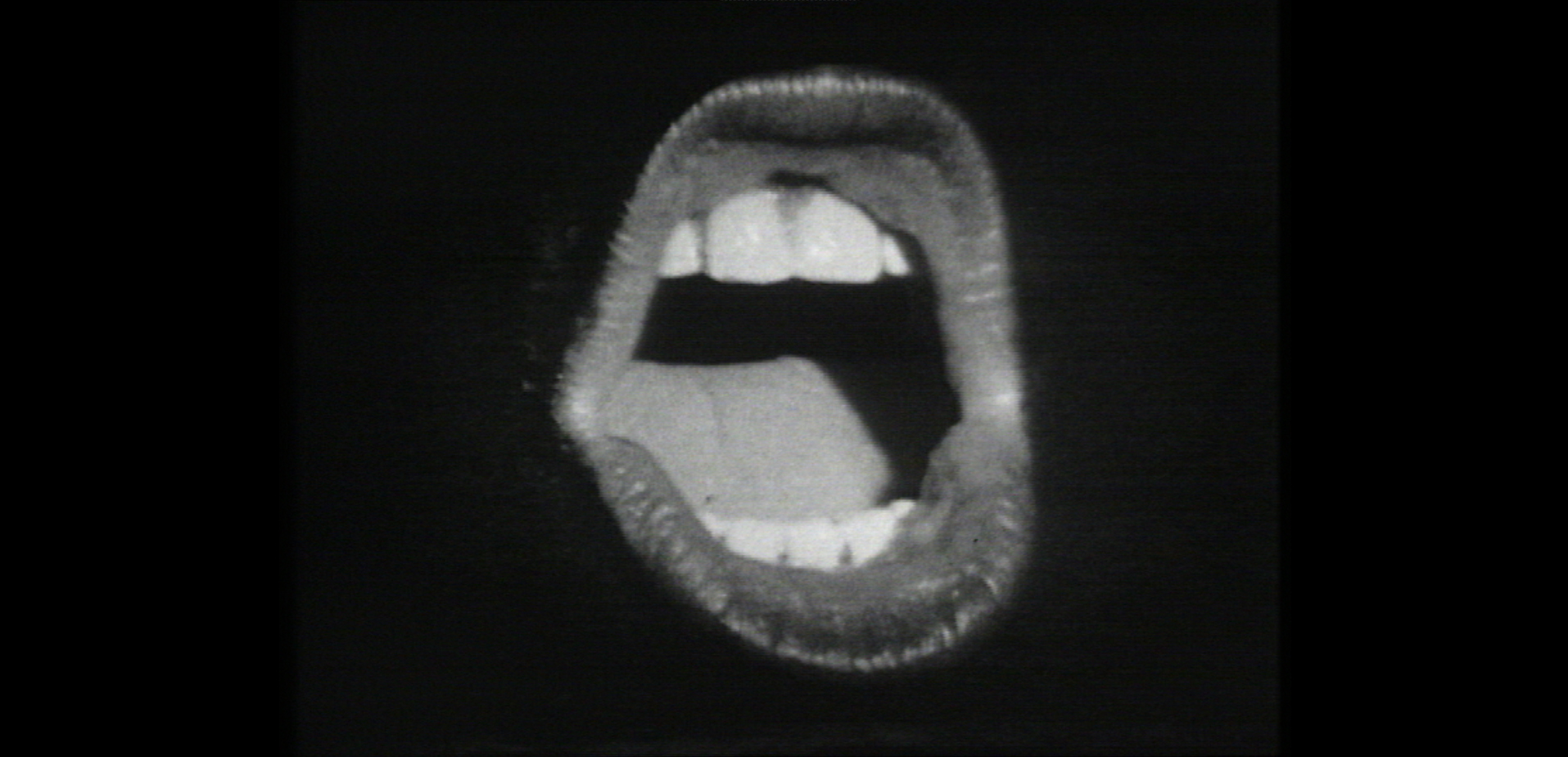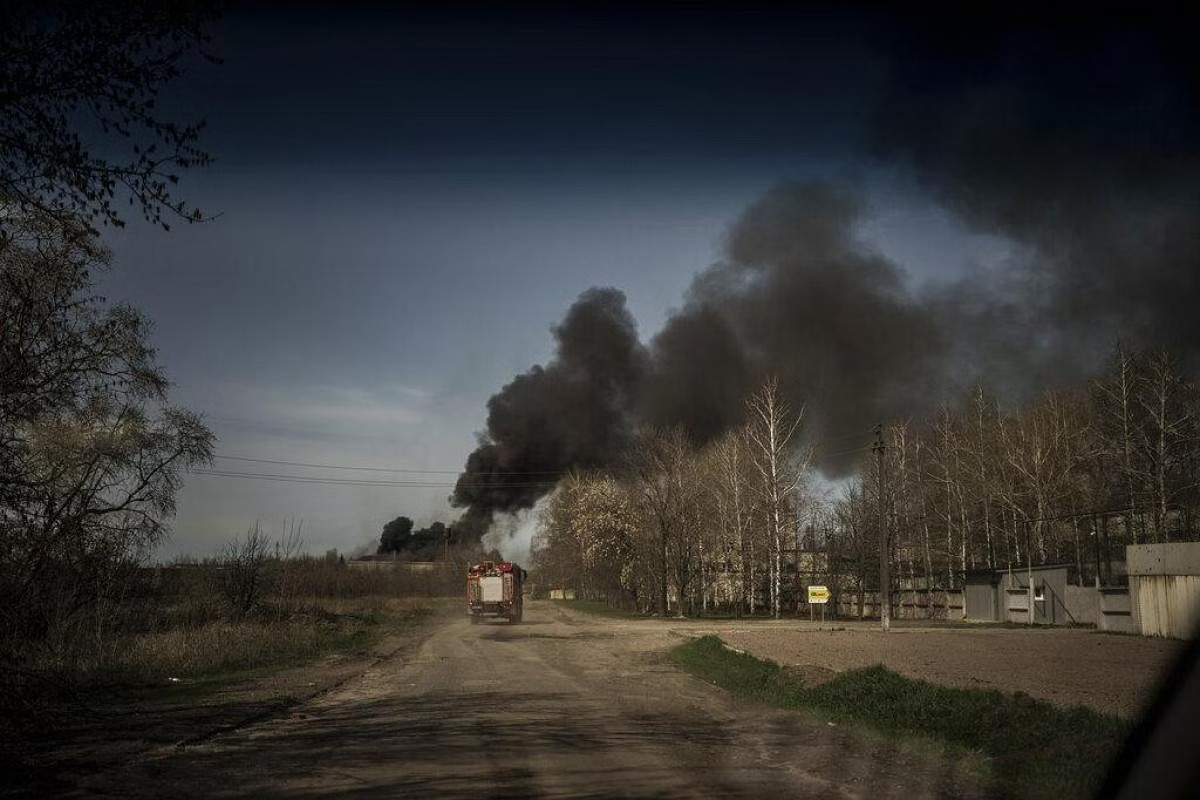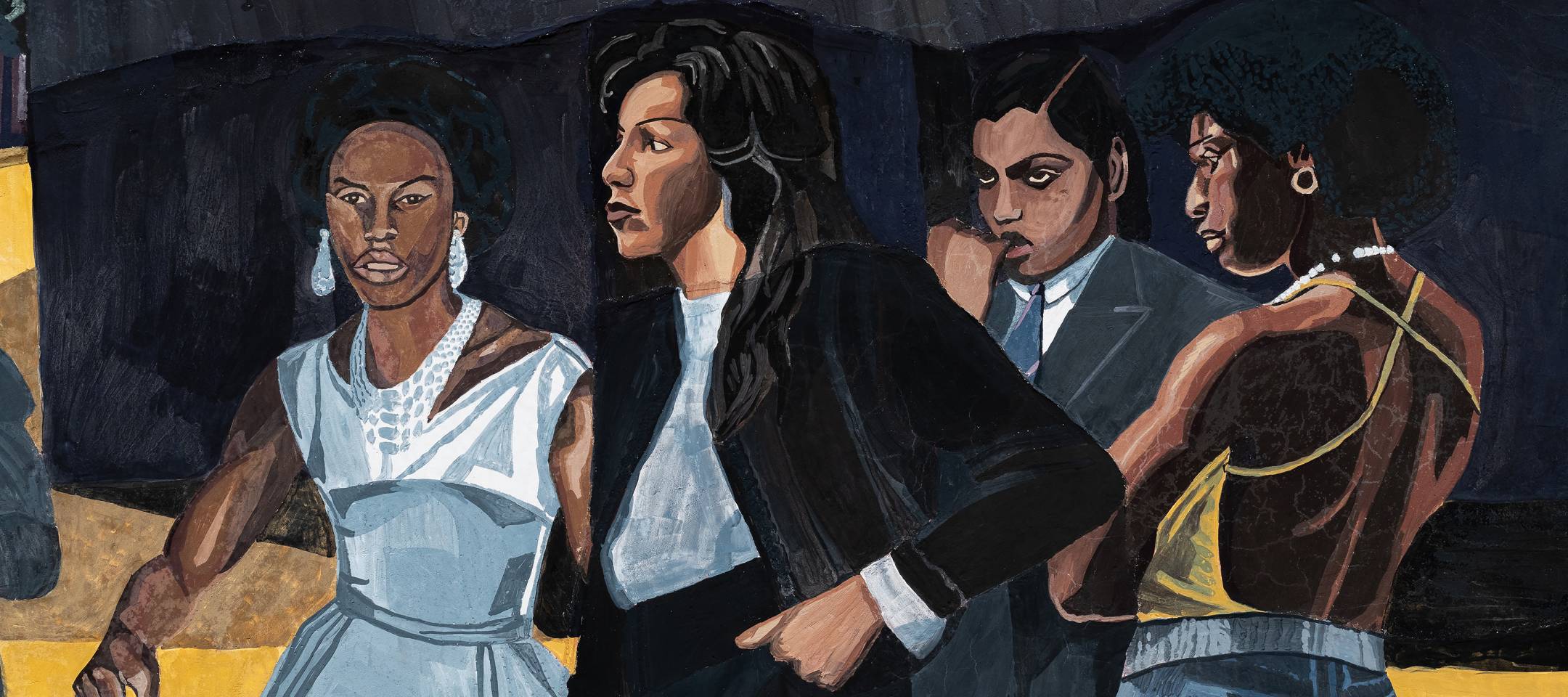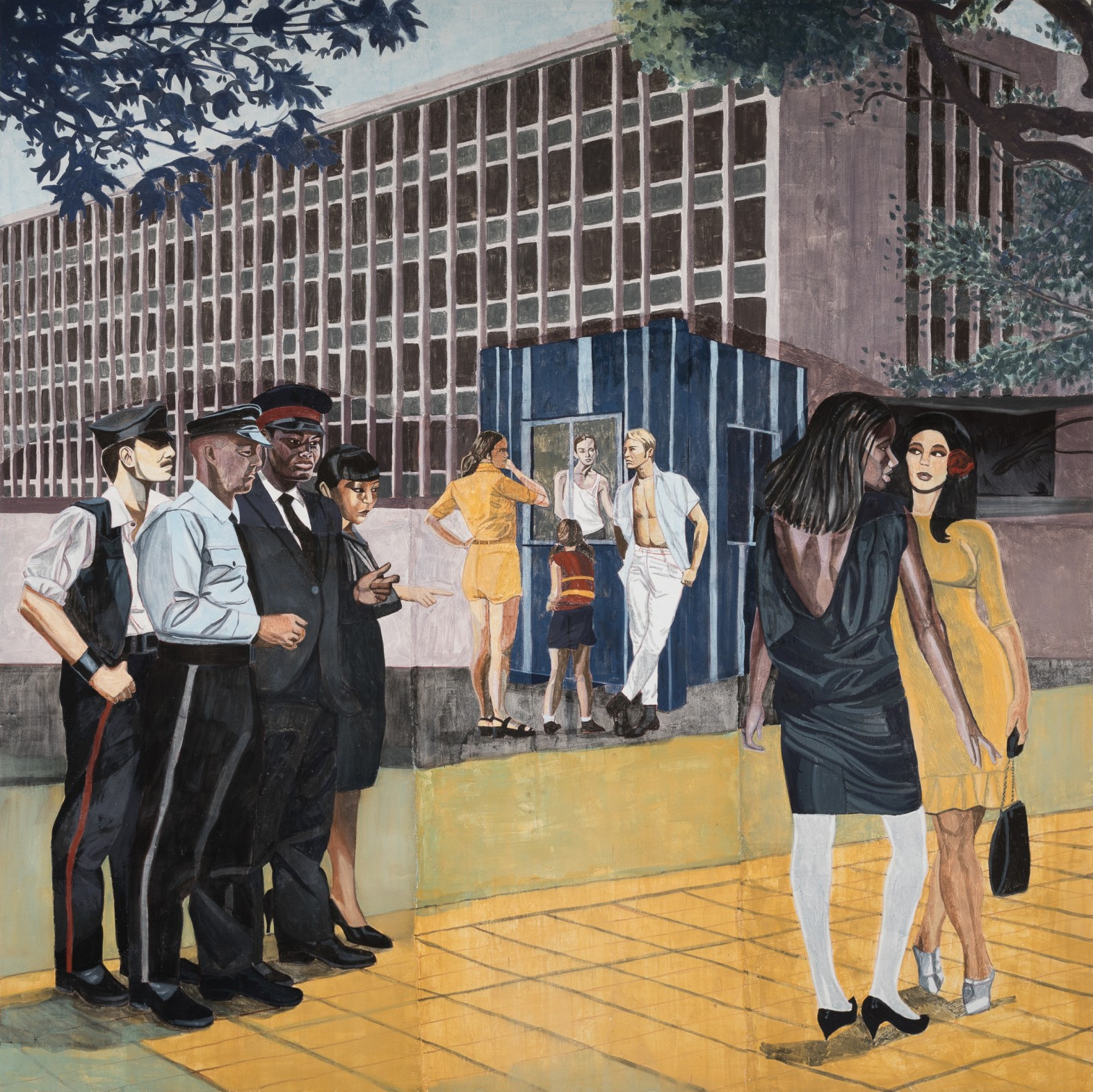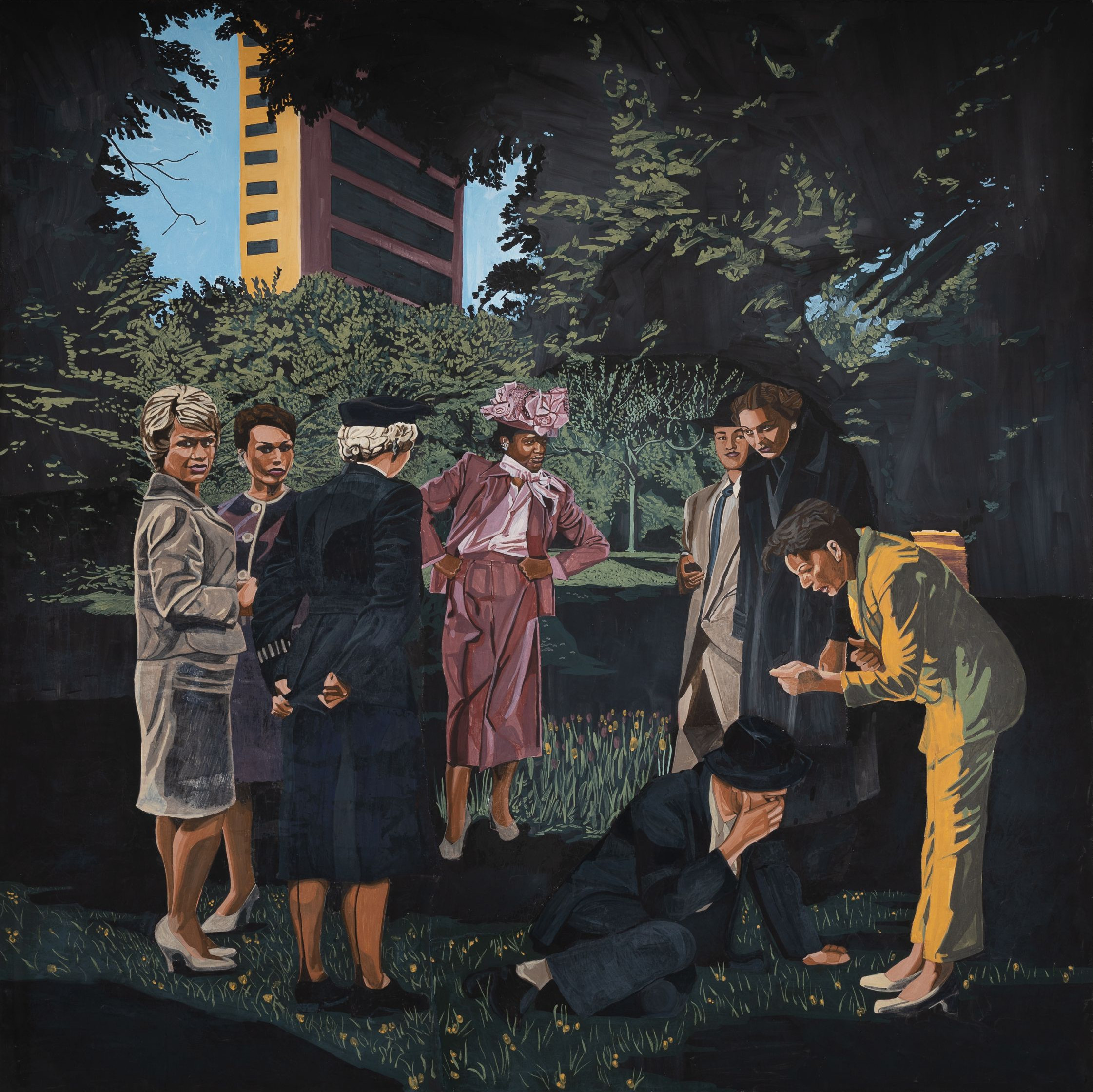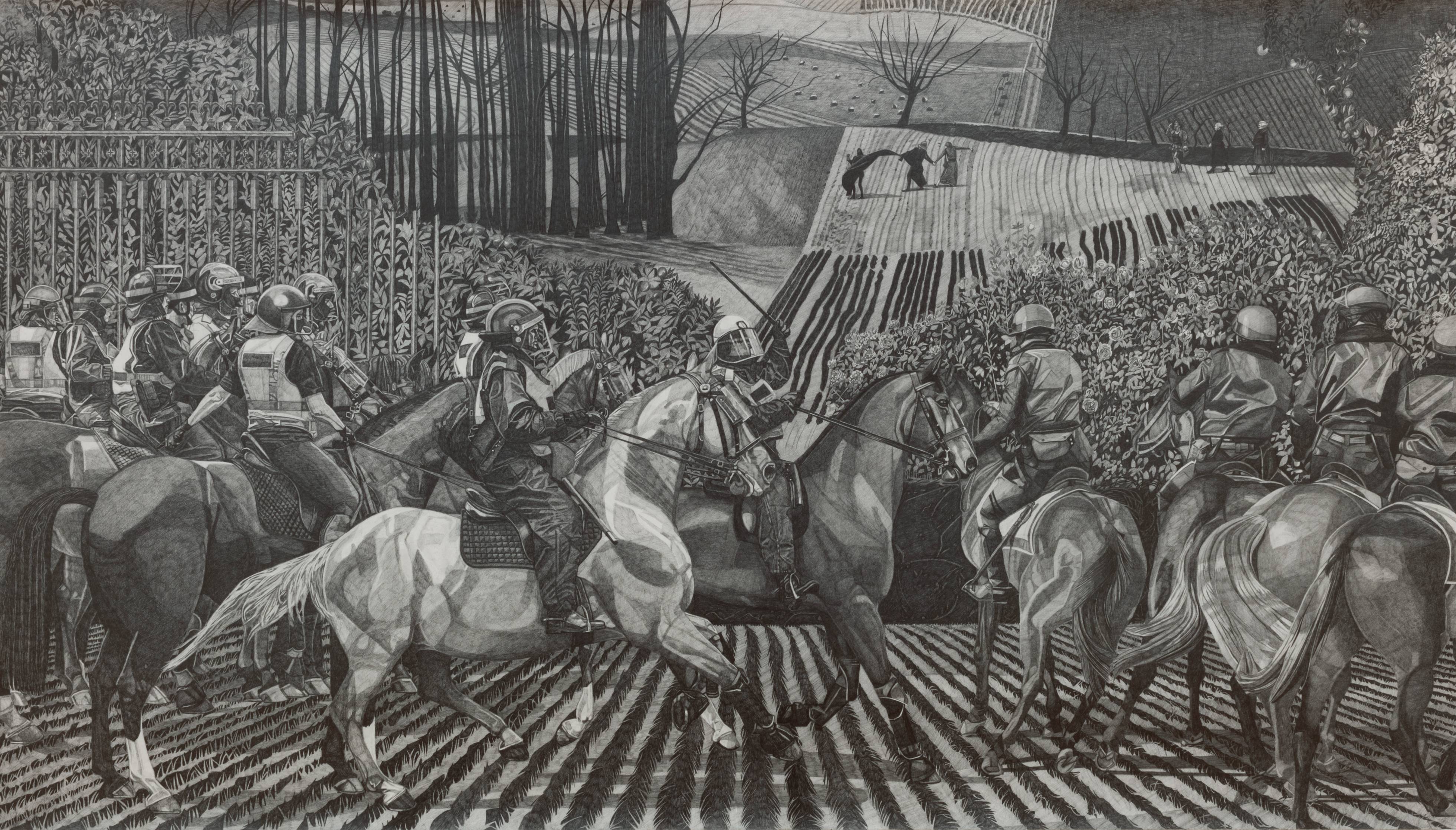Italians, it is said, are given to a perspective on politics that they call dietrismo. Dietro means behind, and dietrismo means a habitualized conviction that what you see is designed to hide what you get, by powers operating behind a curtain that divides the world into a stage and a backstage, the latter being where the real action is, the former where it is purposely mispresented. You read something, or hear about it on the radio or on TV, and as a well-trained dietrista you wonder, not so much about what you are being told but why you are being told it, and why now.
These days, after three years of Covid and one year of the Ukrainian war, it seems we have all become Italians, dietrismo now being as universal as pasta. More and more of us read the ‘narratives’ produced for our benefit by governments and their client media, no longer for what they say but for what they may mean: as distorted images of reality that nonetheless seem to signify something, a little like the shadows on the wall of Plato’s cave. Take, for example, the semi-official ersatz account of the sabotage of the Nord Stream pipelines, published by the New York Times and handed to the German weekly, Die Zeit: the supposed culprits were six people, as yet unknown, on a Polish yacht rented somewhere in East Germany, who had conveniently left traces on the boat’s kitchen table of the powerful explosives they had taken along to the crime scene. Apart from the truest of the true believers and, of course, the loyal manufacturers of public consent, it didn’t require a lot of thinking to see that the story had been concocted to crowd out the account presented by Seymour Hersh, the immortal investigative reporter. What was exciting about it for the dietristic mind was that it was so obviously ridiculous that it seemed its ridiculousness could not be due to incompetence – not even the CIA could be as dumb as that – but was rather intentional, raising the question of what it might have been intended for. Perhaps, political cynics suggested, the purpose was to humiliate the German government and its federal prosecutor’s office, thereby breaking their will, by having them publicly declare this obvious nonsense to be a valuable lead to follow in their unrelenting effort to resolve the mystery of the Nord Stream bombing.
Another intriguing feature of the story was that the suspected boat renters were said to have some connection to ‘pro-Ukrainian groups’. While according to the report there were no indications that these were connections with the Ukrainian government or military, any Le Carré connoisseur knows that where the secret services are involved, any kind of evidence can easily be discovered if needed. Unsurprisingly, the report caused panic in Kiev, where it was read, probably rightly, as a signal from the United States that its patience with Ukraine and its present leadership was not unlimited. In fact, at about the same time there were mounting reports on corruption in Ukraine, emanating from the United States, coinciding with and reinforcing growing resistance among Republicans in Congress against ever more dollars being diverted into the Ukrainian defence budget – as though corruption in Ukraine had not always been notoriously rampant (viz. Hunter Biden’s stint as energy policy expert on the board of Burisma Holdings Ltd.). Beginning in January this year, the Washington Post and New York Times published a series of articles on Ukrainian outrages, including army commanders using American dollars to buy cheap Russian diesel for Ukrainian tanks and pocketing the difference. A shocked Zelensky immediately dismissed two or three high-ranking officials, promising to fire more in time.
Why was this now presented as news, even though it has long been common knowledge that Ukraine is amongst the world’s most corrupt countries? Further adding to what, seen from Kiev, must increasingly have appeared to be ominous writing on the wall, secret American documents leaked in the second half of April showed that the US military’s confidence in the ability of Ukraine to launch a successful spring counteroffensive, let alone win the war as its government had promised to its citizens and international sponsors, was at an all-time low. To American opponents of the war, Republicans as well as Democrats, the documents confirmed that keeping the Ukrainian army in action might turn out to be unacceptably expensive, all the more so since both political parties in the United States agreed that their country had to get ready sooner rather than later for a much bigger war, fighting the Chinese in the Pacific. (By the end of 2022, the United States was estimated to have spent something like $46.6 billion on military aid to Ukraine; much more is expected to be required as the conflict drags on.) For Ukrainians and their European supporters, it seemed hard to avoid the conclusion that the United States might soon take leave of the battlefield, turning its unfinished European business over to the locals.
Of course, compared to Afghanistan, Syria, Libya and similar places, what the Americans are likely to abandon is in not nearly as messy a condition. Working with the Baltic states and Poland, the United States has managed in recent months to push Germany into something like a position of European leadership, on the provision that it takes responsibility for organizing and, importantly, financing the European contribution to the war. Step by step over the past year, the EU was simultaneously turned into an auxiliary of NATO – in charge, among other things, of economic warfare – while NATO became more than ever an instrument of American policy flagged as ‘Western’.
When in mid-2023 NATO’s general secretary, Jens Stoltenberg, is rewarded for his hard work with a well-deserved sinecure, the presidency of the Norwegian central bank, rumour has it that Ursula von der Leyen, currently president of the European Commission, will be promoted to succeed him. This would complete the EU’s subordination to NATO – that other, much more powerful international organization headquartered in Brussels which, unlike the EU, includes, and indeed is dominated by, the United States. In her earlier life, von der Leyen was, of course, German Defence Minister under Merkel, although according to general impression one of the more incompetent ones. While in this capacity she shared in the responsibility for the allegedly dismal condition of the German armed forces at the beginning of the Ukrainian war, she has now apparently been forgiven on account of her ardent Americanism-as-Europeanism or, as the case may be, Europeanism-as-Americanism. In any case, an agreement on closer cooperation was signed by the EU and NATO in January 2023, made possible not least by Finland and Sweden ending their neutrality and joining NATO. According to FAZ, the agreement establishes ‘in no uncertain terms the priority of the Alliance with respect to the collective defence of Europe’, thereby enshrining the leading role of the United States in European security policy, broadly defined.
The German government is now busy assembling battlefield-ready battalions of tanks of different European builds (the American M1 Abrams are said to arrive in a few months – how many months exactly is kept a secret – in Europe, where their Ukrainian crews will be trained on German military bases). It will also supply and keep in good repair the fighter planes that Germany, along with the United States, still refuses to deliver to Ukraine (though not for much longer if experience is to be a guide). Meanwhile Rheinmetall announced that it will build a tank factory in Ukraine with a capacity of 400 latest-model battle tanks per year. Also, on the eve of the 21 April meeting of the Ramstein support group, Germany signed an agreement with Poland and Ukraine on a repair shop, located in Poland, for Leopards damaged at the Ukrainian front, to go into operation already at the end of 2023 (obviously on the assumption that the war will not have ended by then). Add to this the promise, freely renewed by von der Leyen on behalf of the EU, that Ukraine will after the war be rebuilt at European, meaning German, expense – no mention, incidentally, of a contribution from the Ukrainian oligarchs, not many in number, but each of them all the richer for that. Indeed, an early April visit to Kiev by the German Economy Minister, Robert Habeck, together with a delegation of CEOs of large German firms, provided an opportunity to explore future business opportunities in the reconstruction of Ukraine once the war is over.
This may not happen anytime soon, however. The recently leaked American documents and the pronouncements of the semi-official commentariat indicate that a Ukrainian Endsieg is not expected imminently, if it is expected at all. Western delivery of military hardware seems to be fine-tuned to enable the Ukrainian army to hold its position; when the Russians gain territory, Ukraine will be given as much artillery, ammunition, tanks and fighter planes as it needs to push them back. A Ukrainian victory, however, declared essential for the survival of the Ukrainian people by its governing party, seems not to be on the American shopping list anymore. Looking at the delivery schedules for Abrams tanks and fighter bombers, to the extent that they can be gleaned from official announcements, the expectation is rather for something like drawn-out trench warfare with heavy bloodshed on both sides. It is interesting in this context that, in an apparently unguarded moment during one of his daily television addresses, Zelensky, demanding as always more Western military support, argued that Ukraine must win the war before the end of 2023 because the Ukrainian people may not be willing to bear its burden much longer.
As the United States proceeds towards Europeanizing the war, it will be up to Germany not just to organize Western support for Ukraine but also to impress upon the Ukrainian government that at the end of the day this support may not suffice for the kind of victory that Ukrainian nationalists claim the Ukrainian nation needs. As American franchisee for the war, Germany will be first in line to take the blame if its outcome falls short of public expectations in Eastern Europe, in the United States, among German pro-Ukrainian militants, and certainly in Ukraine itself. This prospect must be even more uncomfortable for the German government, since it appears increasingly unlikely that how the war ends will be decided in Europe. An important, possibly decisive player in the background will be China, with its longstanding policies of opposing any use of nuclear arms and abstaining from delivering arms to countries at war, including Russia. Following a short visit to Beijing, Scholz claimed that these were concessions to Germany, even though they date back much further. Indeed, the apparent American reluctance to enable Ukraine to go for an all-out victory, leaving post-operational rehabilitation to Germany, may be motivated by a desire to enable China to stick to its policy – which it might not be able to do if Russia and its regime were at some point pushed against the wall. If this was not merely a tacit understanding but rather some sort of negotiated agreement, it would certainly not be made public at a time when the Biden administration is making preparations to go to war with China.
The super-nationalists in Kiev may already smell a rat. Shortly after the latest meeting of the Ramstein group, Deputy Foreign Minister Andriy Melnyk, representative of the classical-fascist Bandera element in the Ukrainian government, expressed his country’s gratitude for the promised arms deliveries. At the same time, he let it be known that they were pitifully insufficient to ensure a Ukrainian victory in 2023; for this, Melnyk insisted, no less than ten times as many tanks, planes, howitzers and the like would be required. Again applying dietristic hermeneutics, Melnyk, trained at Harvard University, must have known that this was bound to annoy his American patrons. That he doesn’t seem to care implies that he and his comrades-in-arms consider Washington’s ‘pivot to Asia’ already underway. It also signals both the despair of the governing Ukrainian clique regarding the prospects of the war, as well as its willingness to fight to the bitter end, driven by the radical-nationalist belief that real nations grow on the battlefield, watered with the blood of their best.
The approaching nadir of Ukrainian ultra-nationalism signals the emergence of a new global order, the contours of which, including the place of Europe and the European Union, can be discerned only by bringing China into the picture. As the United States turns its attention to the Pacific, its aim is to build a global alliance encircling China, to keep Beijing from contesting American control of the Pacific. This would replace the unipolar world of the failed neocon ‘Project for a New American Century’ with a bipolar one: globalization, and indeed hyperglobalization, now with two centres, much like the Cold War of old, with a remote prospect of a return, perhaps after another hot war, to only one centre, a New World Order Mark II. (Capitalism, we must remind ourselves, transformed and re-formed itself more fundamentally and effectively than ever in the wake of the two Great Wars of the twentieth century, in 1918 and in 1945, securing its survival by taking a new shape; surely there must be some memory in the centres of capitalist grand-strategy of the rejuvenating effects of war.)
China’s geostrategic project, by contrast, seems to be a multipolar world. For reasons of both geography and military capacity, the goal of Chinese foreign and security policy cannot really be a bipolar order with China battling the United States for global dominance, nor a unipolar world with itself at the centre. As a land power bordering on a large number of potentially hostile nations, it needs first and foremost something like a cordon sanitaire, whereby its neighbouring countries are bound together with China by shared physical infrastructure, freely awarded credit, and a commitment to stay out of alliances with potentially hostile external powers – as opposed to the American desire to subject the world as a whole to a globalized Monroe Doctrine. (The United States has only two neighbours, Canada and Mexico, which are quite unlikely to turn into Chinese allies.) In addition, China actively encourages the formation of something like a league of non-aligned regional powers, including Brazil, South Africa, India and others: a new Third World which would keep out of a Sino-American confrontation and, importantly, refuse to join American economic sanctions against China and its new client state, Russia.
In fact, indications are that China would prefer to be seen as a neutral power among others, rather than one of two combatants for world domination, at least as long as it cannot be sure it would not lose a war against the United States. A desire to avoid a new bipolarism along the lines of the first Cold War would account for China’s refusal to provide arms to Russia, even though Ukraine is being armed to the teeth by the United States. (China can afford this because Russia has no choice other than to fall in line with it, arms or not, no matter the price China might extract for its protection.) In this context, the one-hour telephone conversation between Xi and Zelensky on 26 April, mentioned only in passing by most of the European press, may have been something of a turning point. Apparently Xi offered himself as mediator in the Russian-Ukrainian war, on the basis of a Chinese twelve-point peace plan that had been talked down as trivial and useless by Western leaders, if they took notice at all. Remarkably, Zelensky called the conversation ‘meaningful’, elaborating that ‘particular attention was paid to the ways of possible cooperation to establish a just and sustainable peace for Ukraine.’ If successful, the Chinese intervention might be of formative significance for the emerging global order after the end of the end of history.
In recent months the German foreign minister, Annalena Baerbock, has been crisscrossing the world on a mission to whip as many countries as possible into the American camp of a renewed bipolarism, by appealing to liberal – ‘Western’ – values, offering diplomatic, economic and military support, and threatening economic sanctions. In her capacity as America’s roaming ambassador, Baerbock’s credibility requires that her own country strictly follow the American line, including cutting China out of the global economy. This, however, is in fundamental conflict with the interests of German industry, and by extension of Germany as a country, forcing Baerbock to tread an awkward, often outright contradictory line in relation to China. For example, while she framed her recent visit to Beijing in aggressive and even hostile rhetoric both before her arrival and after her departure – so much so that her Chinese counterpart felt it necessary to explain to her at a joint press conference that the last thing China needed was lectures from the West – she also apparently indicated that German sanctions might be selective rather than all-encompassing, with trade relations in several industrial sectors continuing more or less unabated.
With an eye to what might be going on backstage, one may speculate whether Scholz could have managed to get the United States to give Germany some rope in its relations with its most important export market, as a reward for running the European war effort in Ukraine in line with American requirements. On the other hand, German producers seem to have recently lost market share in China, dramatically so in cars, where Chinese customers are spurning new electric vehicles from Germany in favour of homegrown ones. While this may be because German models are considered less attractive, German anti-Chinese rhetoric may have played a role in a country with strong nationalist and anti-Western sentiment. If this is so, it suggests that the problem of German industry being too dependent on China may be about to resolve itself.
German China policy, following the US’s bipolar world political project, causes conflicts not only domestically but also internationally, most of all with France, where it threatens to tear the European Union even further apart. French aspirations to ‘strategic autonomy’ for ‘Europe’ (and ‘strategic sovereignty’ for France) stand a chance only in a multipolar world populated by a good number of politically significant non-aligned countries, quite similar to what the Chinese seem to want. To what extent this implies some kind of equidistance to the United States and China is a question left open, probably deliberately, by Emmanuel Macron. Sometimes he seems to want equidistance, sometimes he denies that he wants it. In any case, this prospect is anathematized by German pro-Western militants, above all by the Greens who now control German foreign policy. Among them, suspicions run deep of Macron’s occasional protestations that ‘strategic autonomy’ is compatible with transatlantic loyalty, at a time of growing confrontation between ‘the West’ and the new East Asian Evil Empire. As a result, France is more isolated than ever in the EU.
Macron, like previous French presidents, has always known that in order to dominate the European Union, France needs Germany on its side, or more precisely, in Brussels jargon: on the backseat of a French-German tandem. His problem is that Germany has now dismounted the bicycle, and for good. Under Green leadership it dreams, together with Poland and the Baltic states in particular, of delivering Putin to the International Criminal Court in The Hague, which requires Ukrainian-German tanks to drive into Moscow, just as Soviet tanks once drove into Berlin. Macron, instead, wants to allow Putin to ‘save face’ and hopes to offer Russia a resumption of economic relations, after a ceasefire mediated, if not by France, then perhaps by a coalition of non-aligned countries from the ‘Global South’, or even by China.
The Götterdämmerung of Franco-German domination of the European Union, and the transformation of its ruins into an anti-Russian economic and military infrastructure run by Eastern European countries on behalf of American trans-Atlanticism, was never more visible than in Macron’s trip to China on 6 April, following Scholz (4 November) and preceding Baerbock (13 April). Strangely, Macron allowed von der Leyen to accompany him, according to some as a German gouvernante charged with preventing him from embracing Xi too passionately, according to others to demonstrate to the Chinese that the president of the EU was not a real president but a subordinate to the President of France, ruling not just his own country but all of the EU with it. The Chinese, who may or may not have understood Macron’s signals, treated him royally although they were undoubtedly aware of his domestic troubles; von der Leyen, known as the Atlanticist hardliner that she is, was given a special non-treatment. While flying back on his plane, von der Leyen no longer travelling with him, Macron explained to the press that American allies are not American vassals, a remark widely understood to imply, again, that Europe’s position should be one of equal distance from China and the United States. Germany, first and foremost its Foreign Minister, was appalled and let it be known, no holds barred, with the German media dutifully and unanimously following suit.
A few days later, on 11 April, Baerbock attended the meeting of the G7 foreign ministers in Japan. There she got her colleagues, including the one from France, to pledge as much allegiance as humanly possible to the American flag, standing as it does for one world indivisible, with liberty and justice for all. By this time Macron, noting that his rhetorical battle against French vassalage had gone unnoticed by the opponents of his pension reform, had already backpedalled and, again, professed everlasting loyalty to NATO and the United States. There is no reason, however, to believe that this will halt the Zeitenwende of the European Union underway with the Ukrainian war: the split between France and Germany and the ascent of the East European member states to European dominance following the return of the United States to Europe under Biden, in preparation for a global confrontation with the Land of Xi, in the untiring American effort to make the world safe for democracy.
Read on: Grey Anderson, ‘Weapon of Power, Matrix of Management’, NLR 140/141.



